How to plan a dry garden – ideas for plants and landscaping
Discover how to plan a dry garden that's beautiful, low-maintenance and sustainable, with advice from the experts
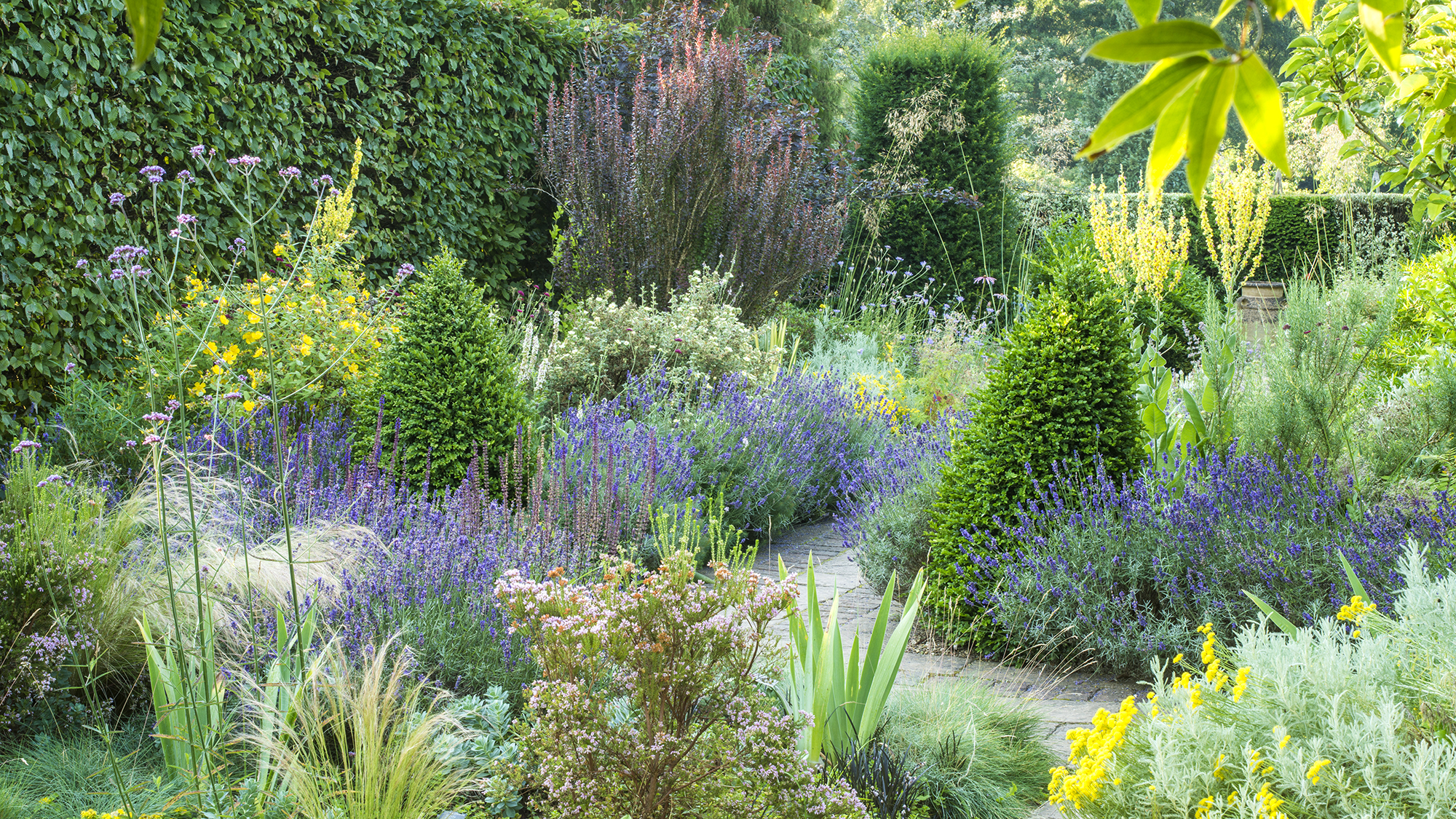

Melanie Griffiths
If you're wondering how to plan a dry garden then you likely want a design that is low-maintenance and able to thrive during hot weather.
But you may not know that creating a dry garden is also one of the most sustainable backyard ideas to embrace.
Dry gardens don't rely on rainwater and irrigation to survive, favoring drought-tolerant planting to reduce reliance on watering
They require less weeding and mowing, and have minimal need for fertilizers and chemicals.
‘A dry garden is a garden that breathes. It is all about drainage, giving plants little opportunity to absorb water,' says garden designer James Basson of Scape Design.
Dry gardens are beloved of wildlife, too, providing a long season of nectar-producing plants for pollinators. ‘They create an ecosystem that encourages biodiversity,’ adds Basson.
When it comes to backyard landscaping ideas, using local, naturally sourced materials such as stone and gravel can cut down your carbon footprint from manufacturing and transport.
Design expertise in your inbox – from inspiring decorating ideas and beautiful celebrity homes to practical gardening advice and shopping round-ups.
How to plan a dry garden – expert guide
Read on for our key principles for planning a dry garden. As well as larger yards, most of these suggestions can be incorporated into your small backyard ideas too.
Bear in mind every garden is unique, so you need to consider the local growing conditions, as well as understanding how your USDA hardiness zone has an impact.
‘Choose the right plant for the right place and plant at the right time of year to allow the plants to establish well, ideally fall or spring,’ adds garden designer Sue Townsend.
1. Check the conditions in your yard
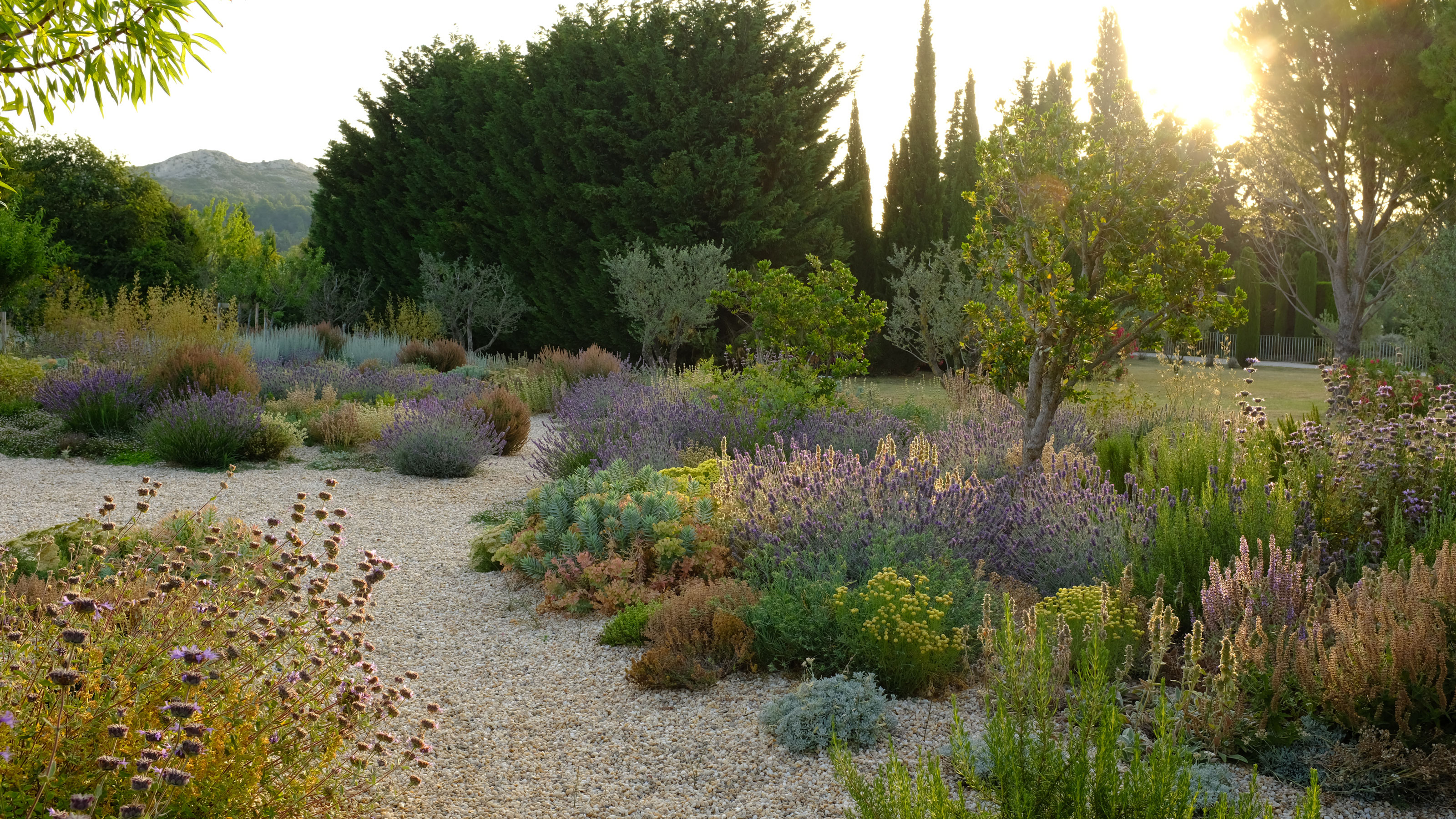
To plan a dry garden, start by looking at your yard – you need to figure out how well its current conditions will support this style of planting and landscaping.
‘Analyze the site,’ says garden designer Thomas Hoblyn. ‘What’s the annual rainfall? What soil type do I have? How much sun does it get?
'These answers help to build up an ideal plant palette. Try to work with what you’ve got rather than making drastic changes to the site.’
Bear in mind that your soil type needs to be fairly free draining in order to support many dry garden plants.
'Avoid or improve areas where water naturally sits, in particular, clay soils,’ adds Hoblyn.
If you have heavy, moisture-retentive soil then explore the possibilities offered by container gardening ideas.
2. Choose drought-tolerant plants
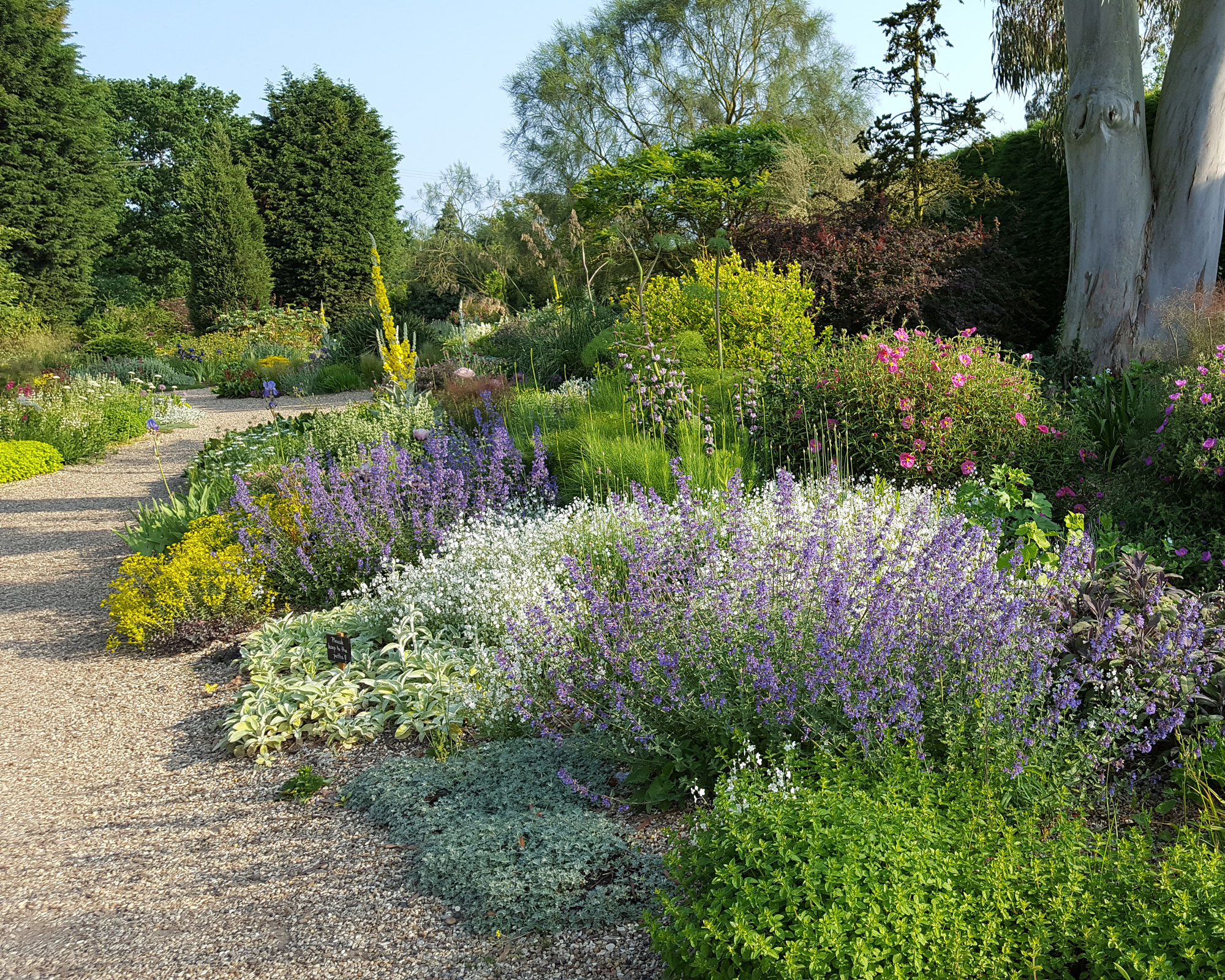
Hardy plants with a low water requirement are central to dry gardens, so take inspiration from sunny Mediterranean garden ideas.
Always choose plants that naturally occur together in hot, dry regions as you can be confident they will look right together.
Aim for a mix of longer-lived species that will add structure and shorter-lived perennials and annuals. Grow them ‘lean’ without enriching the soil, and water sparingly once plants get established, then leave them to their own devices.
‘Broadly speaking, dry garden planting tends towards the more short-lived species so this should be embraced,’ says garden designer Jane Brockbank. ‘Have fun with annuals and self-seeders.’
Emphasis should be on contrasting shapes and textures, rather than flower color. Accentuate the different characteristics of plants so they enhance each other.
Repetition of color, shape or form creates a rhythm and guides the eye through the design, giving the planting a cohesive feel.
3. Add shrubs and trees for structure
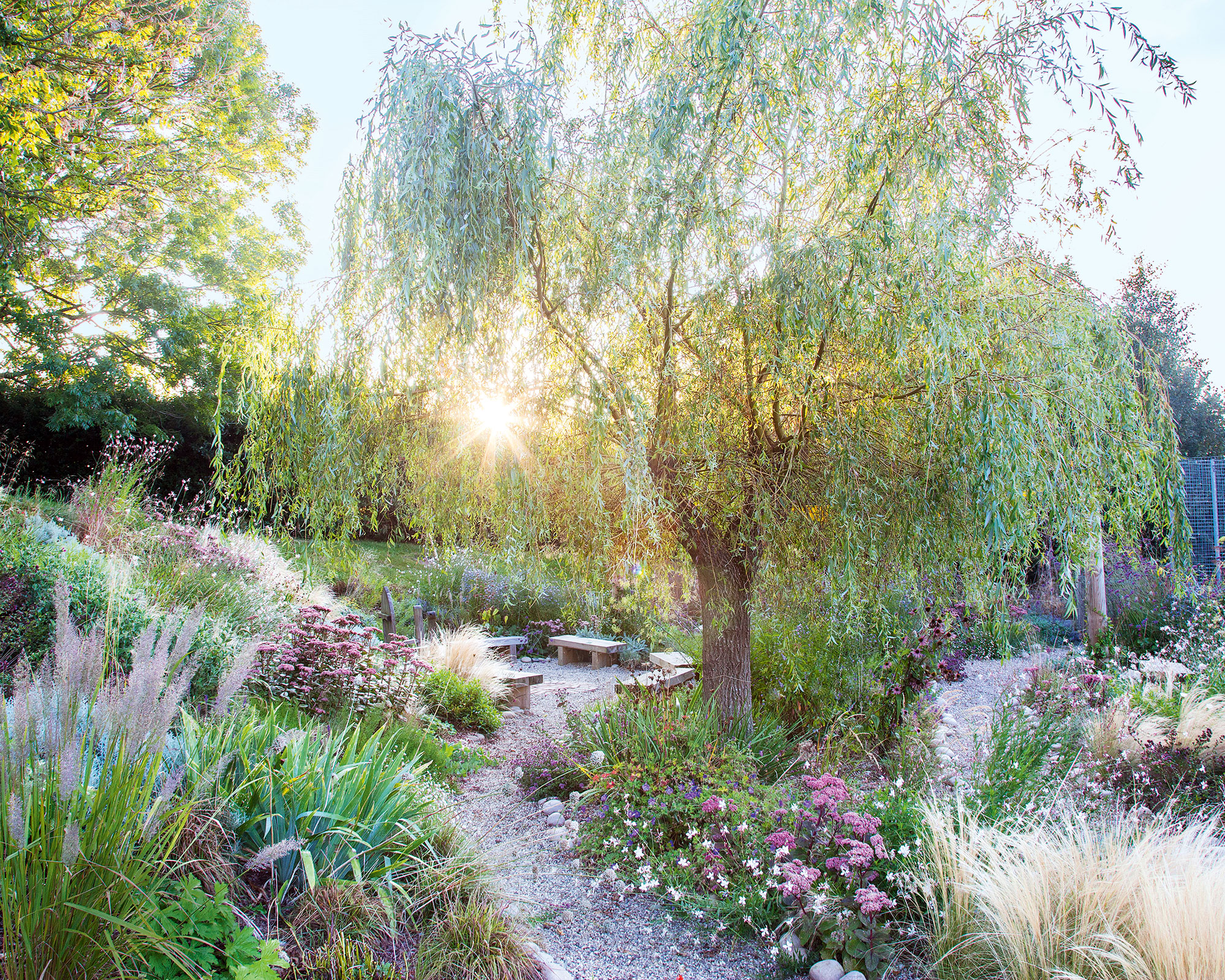
When planning your dry garden, it's tempting to prioritize annual flowers that offer a fast reward, but think about slower-growing structural plants first.
‘Start with a backbone of shrubs for year-round structure and only select trees that won’t cast dense shade,’ says Åsa Gregers-Warg, head gardener at Beth Chatto.
Too many of the best trees for shade will create excessive shadow in a dry garden, but some shade is always important, especially in warmer regions.
Consider planting a few carefully positioned drought-tolerant trees, such as Pyrus calleryana and eucalyptus.
4. Follow the light in your garden
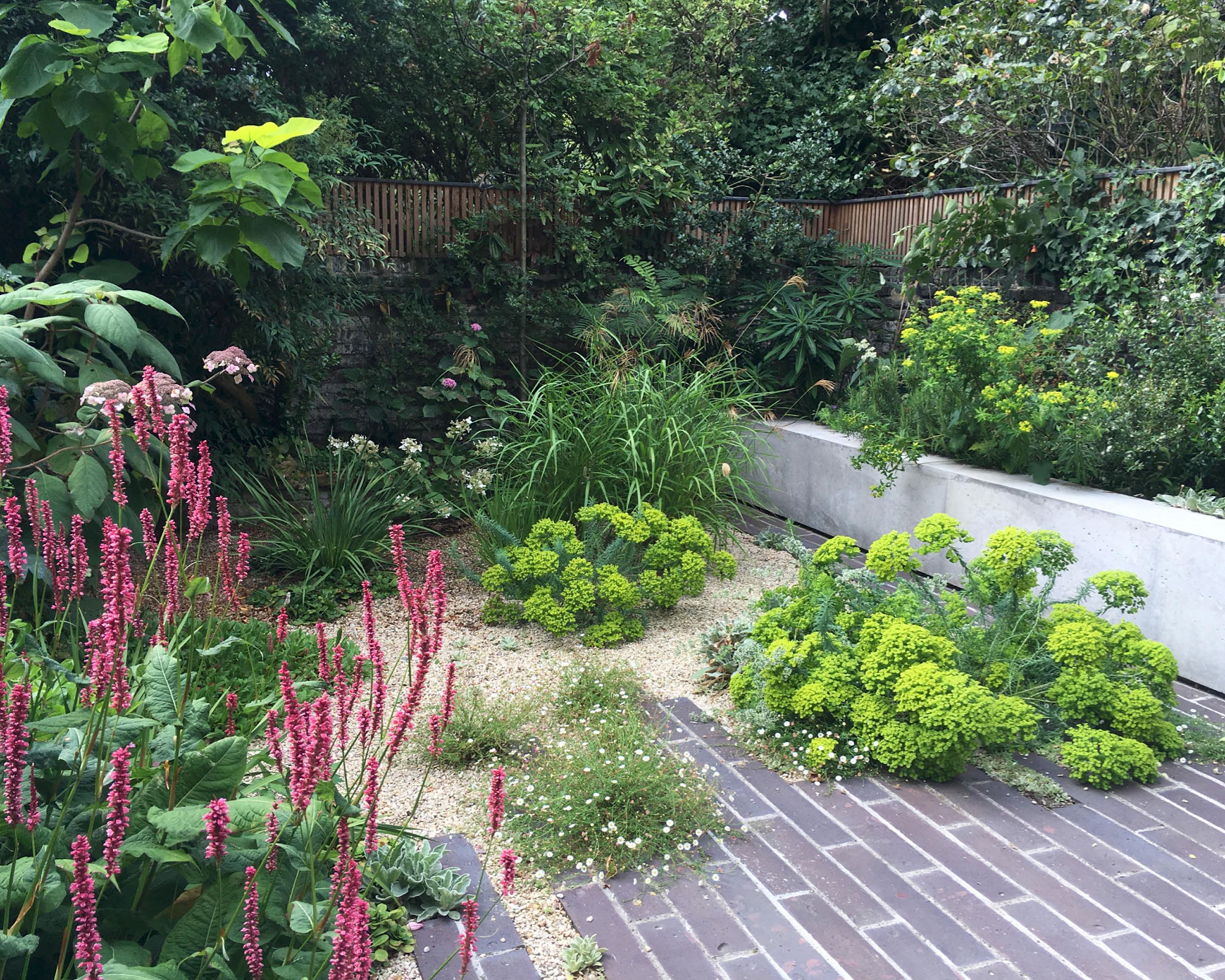
Dry gardens should be fairly open and sunny, although some shade can work well in terms of expanding the range of plants that can be grown.
Every plant has its own preferred light levels, so look at which garden areas receive the most sun and shade, as you will need to position plants to suit.
Many drought-tolerant plants thrive in a sunny spot, but there are varieties that will grow in dry shade, such as Liriope muscari, euphorbia and Japanese anemones.
‘I have successfully made gravel gardens in urban areas where there is the inevitable mixture of sun and shade,’ says Brockbank.
‘Use a small percentage of plants that can tolerate both aspects and repeat them through the scheme to bring it all together.’
‘You should also observe where the light falls across the garden, as it can help you to decide where you plant certain plants such as grasses, which look fabulous backlit by the sun,’ adds Townsend.
Learning how to grow ornamental grasses such as Stipa gigantea and Stipa tenuissima is a great way of adding softness to your garden.
5. Encourage deep roots to form
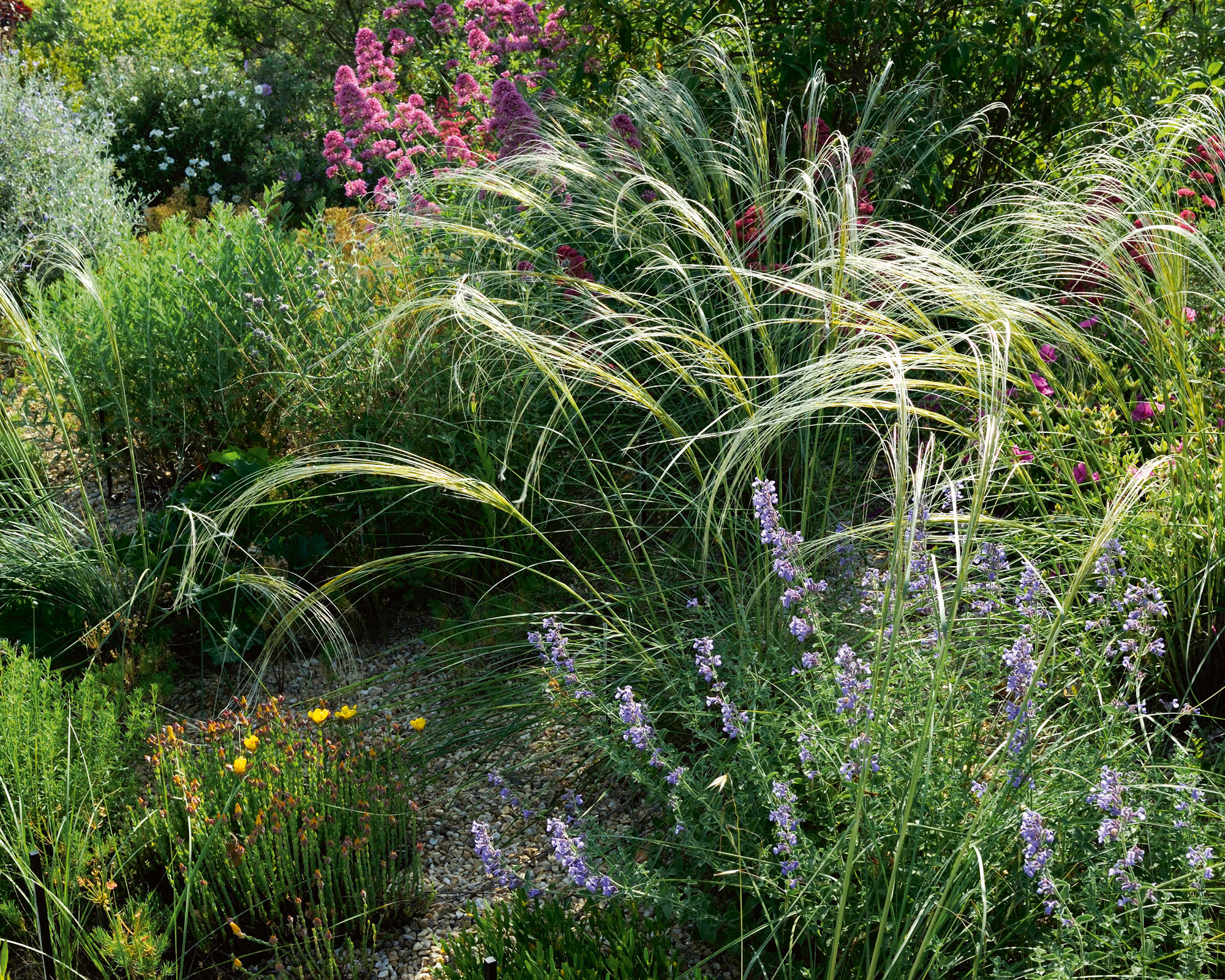
To minimize watering in a dry garden, it's important that plants are able to form long roots, so they can take moisture from deep beneath the surface.
To encourage this, plant young, small plants, as they will be more likely to send out stronger, longer roots than more mature or container-grown plants.
When planting, break up the soil as much as possible to allow roots to spread out, and avoid over watering.
Dry gardens require deep, occasional irrigation – lightly watering too often will encourage weak, shallow roots.
6. Reduce your lawn size
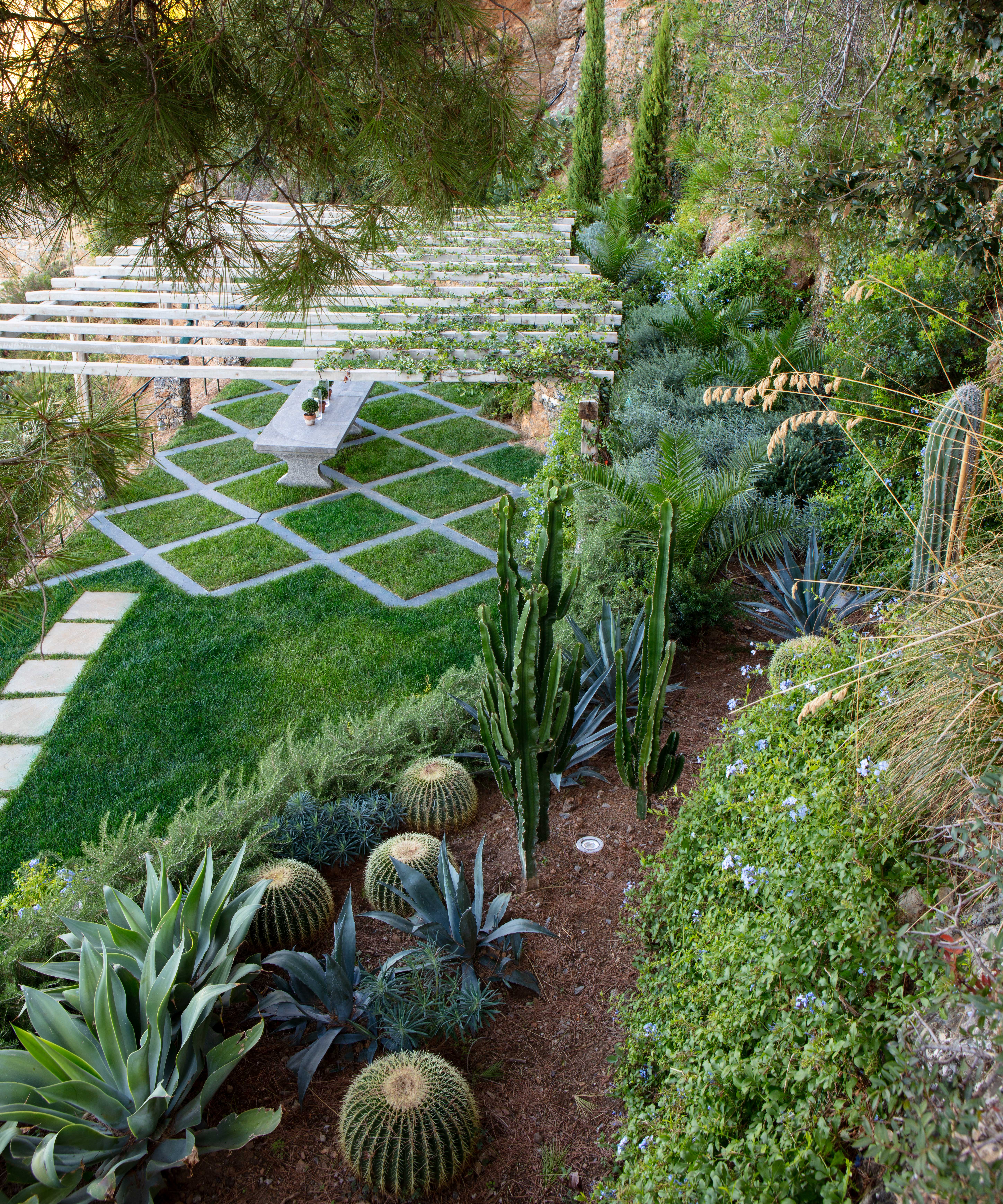
Consider how much lawn is absolutely necessary in your dry garden, especially in a front garden, and eliminate it from places where its presence can’t really be justified.
Large lawns require a lot of maintenance with mowing and watering in hot weather, but they are also not the most visually interesting aspect of a yard.
‘Lawns are now so ubiquitous that they risk making our gardens bland and monotonous. Finding ways to replace them with something else is a decisive move against this dreary uniformity,' advises garden designer Olivier Filippi.
When it’s not an aesthetic choice, the need for a surface that can be walked on is often used to justify a large area of lawn. But the areas required for regular foot traffic are usually greatly overestimated.
7. Opt for groundcover planting
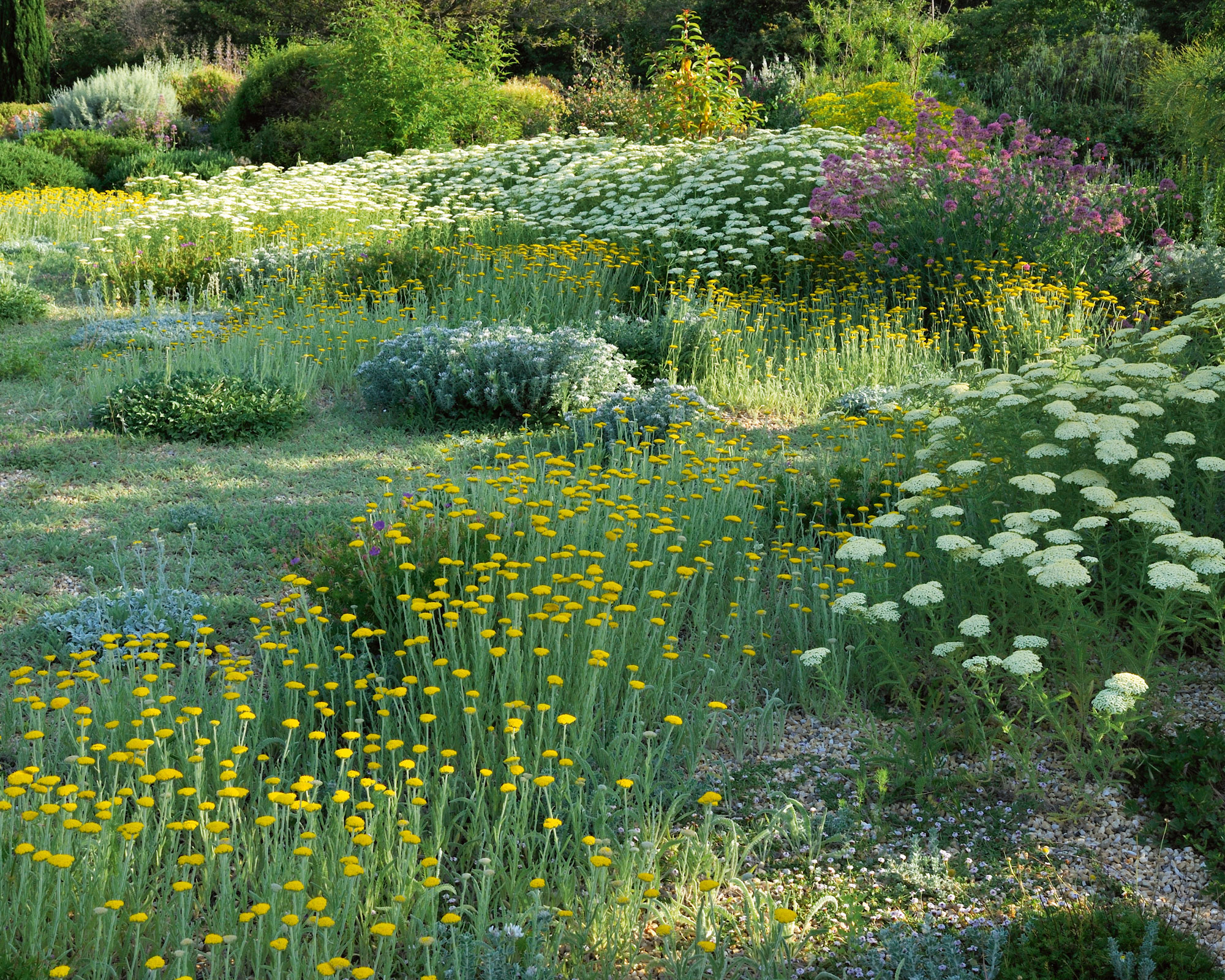
Replacing lawn enables us to regain surface, but what should we put in its place? Instead, opt for a ‘groundcover garden’ that is suited to local conditions and easy to maintain.
Mat-forming plants are suitable for growing green carpets that can be walked on. In areas where there is no foot traffic, create large beds of perennials and shrubs whose dense foliage prevents light getting through to the ground, thus limiting competition.
'Instead of trying to create a fixed picture, leave the groundcover to evolve from year to year in a scheme that takes its lead from the soil, climate and planting,' says Filippi.
Let ground cover plants like thyme and Stachys byzantina weave in between the taller plants.
Poor and stony soil is a bonus in gardens where you want to grow a wide range of groundcover plants with little maintenance.
'Weeds grow less easily than they would in rich soil, and groundcover plants can spread comfortably without the risk of being swamped by competitors,' adds Filippi.
8. Choose the best materials
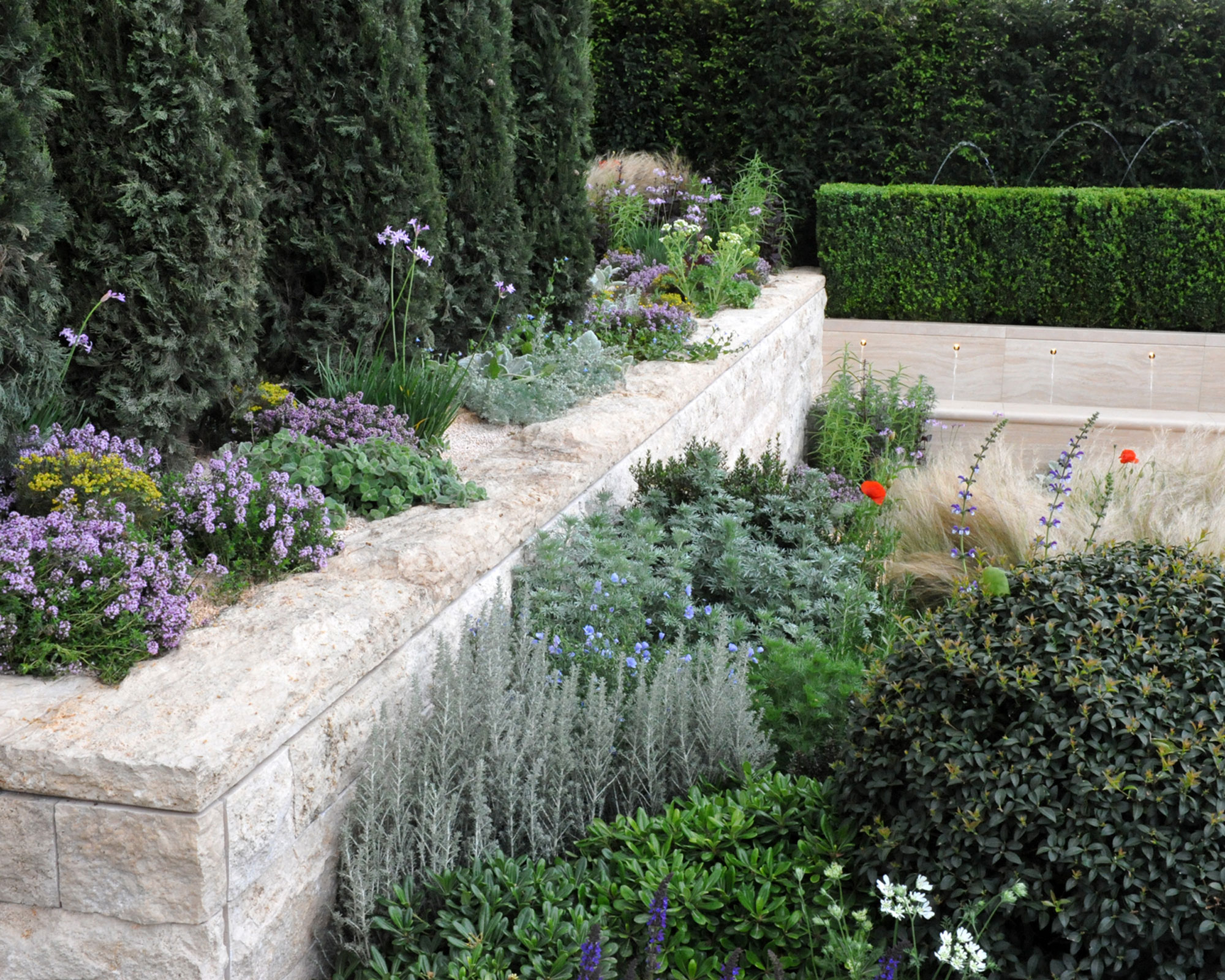
‘A huge amount of material needs to be worked into the ground for dry gardens to be planted. Gravel, sand, crushed hard core or concrete; in fact anything that will improve drainage,’ says Basson.
Picking a local loose stone or gravel for a mulch works well in rock garden ideas. These materials also fit in with the local environment and are good for reducing carbon footprint with transport.
‘I would stick to natural durable materials, textured stone, rock, gravel and hardwoods,’ adds Brockbank.
9. Go for gravel surfaces
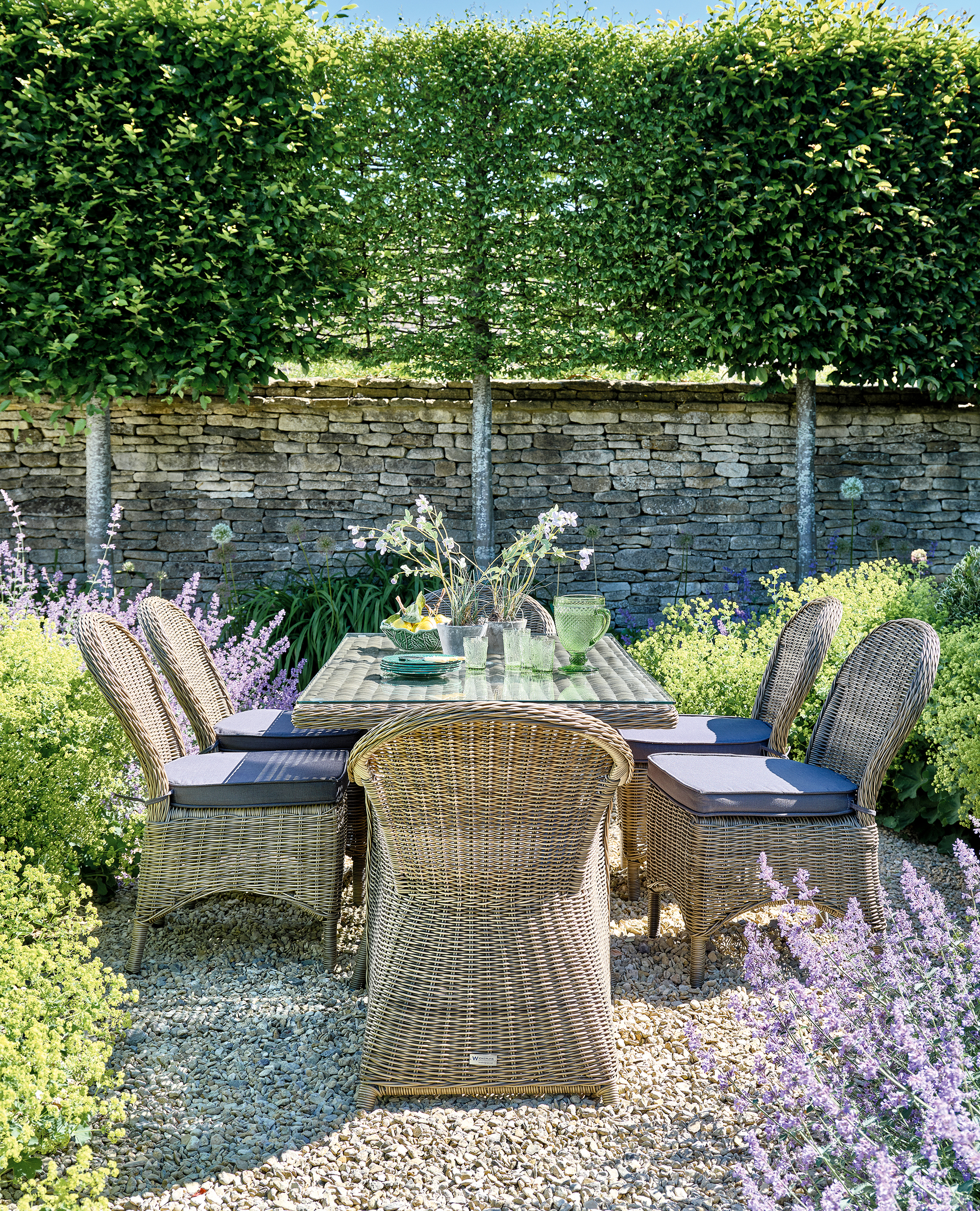
Make gravel garden ideas central to your dry garden. Use this versatile landscaping material to cover pathways, seating and and driveway areas, but also use it around plants.
Providing a balance between plant and stone is characteristic of Mediterranean landscapes, but when used effectively can suppress the germination of weeds almost entirely.
‘A graded gravel mulch will prevent germination of unwanted vegetation and provide space,' says Basson.
Gravel also helps to conserve the warmth in the soil, helping warm weather plants to survive the colder seasons.
‘If you’re planting into deep gravel, be careful that the roots get contact with the subsoil,’ adds Hoblyn.
10. Add terraced areas to sloping yards
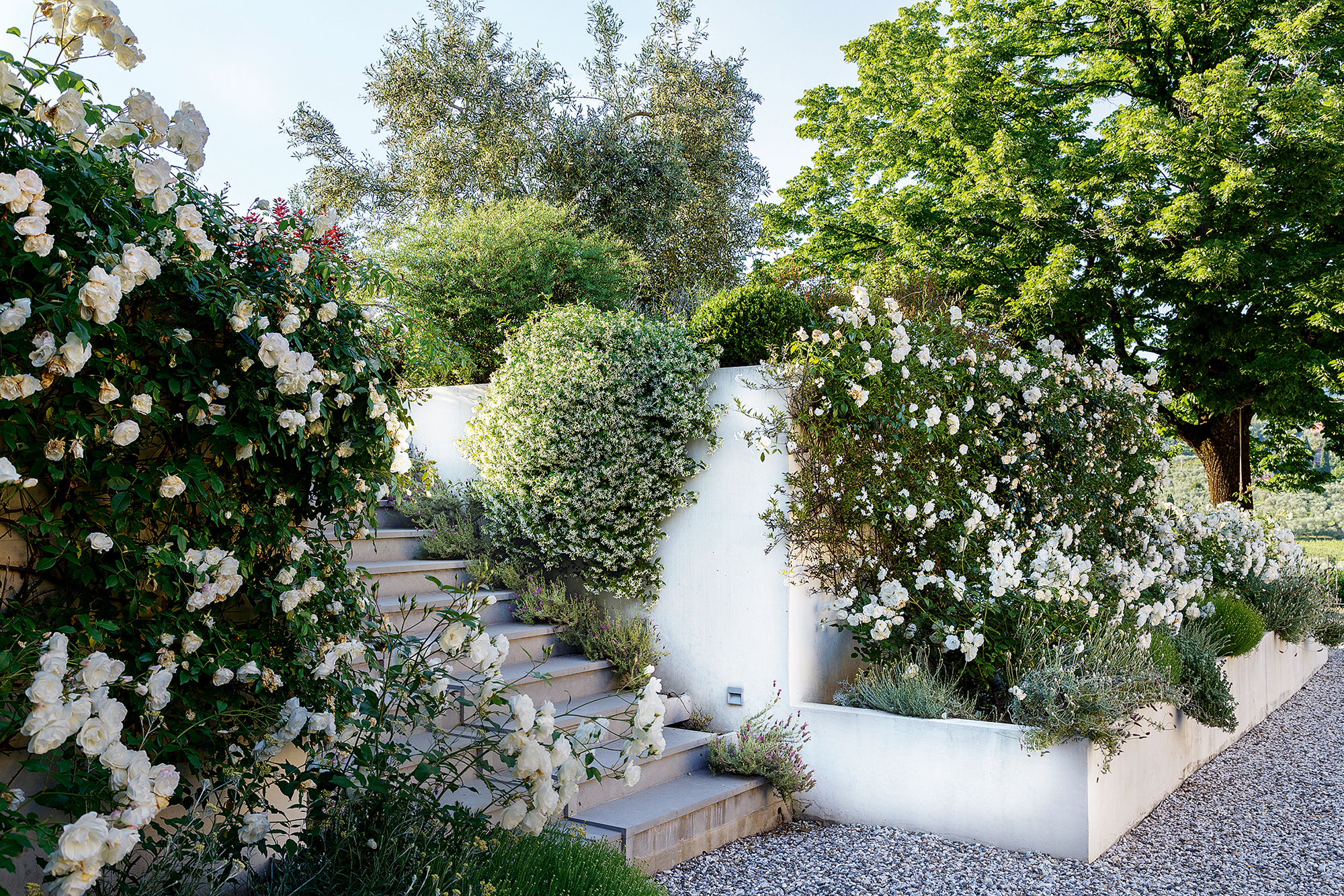
If your yard is sloped or on an uneven site, then consider sloping garden ideas that will complement a dry garden scheme.
Stepped terraces are very evocative of the Mediterranean, and add a wealth of opportunity to create planting pockets with raised beds.
It's also essential for a sloping yard to be stepped with different flat levels if you want to use gravel, which would simply slide down a slope.
What is a dry garden?
A dry garden doesn't rely on rainwater and irrigation to survive. Instead, plants are chosen for their drought-tolerance.
Mediterranean-style planting is often favored for its ability to withstand dry conditions.
Dry gardens also require good drainage in order to allow the plants to thrive, so gravel is often mixed in with the soil to allow water to run freely.
However, all plants require some moisture, so it's vital they are able to establish strong, deep roots, are free from competition from weeds, and are mulched – usually with gravel – to help the soil to retain moisture.
As well as being less reliant on watering, a dry garden is also a more low-maintenance design, requiring less weeding, fertilizing and mowing than traditional gardens.
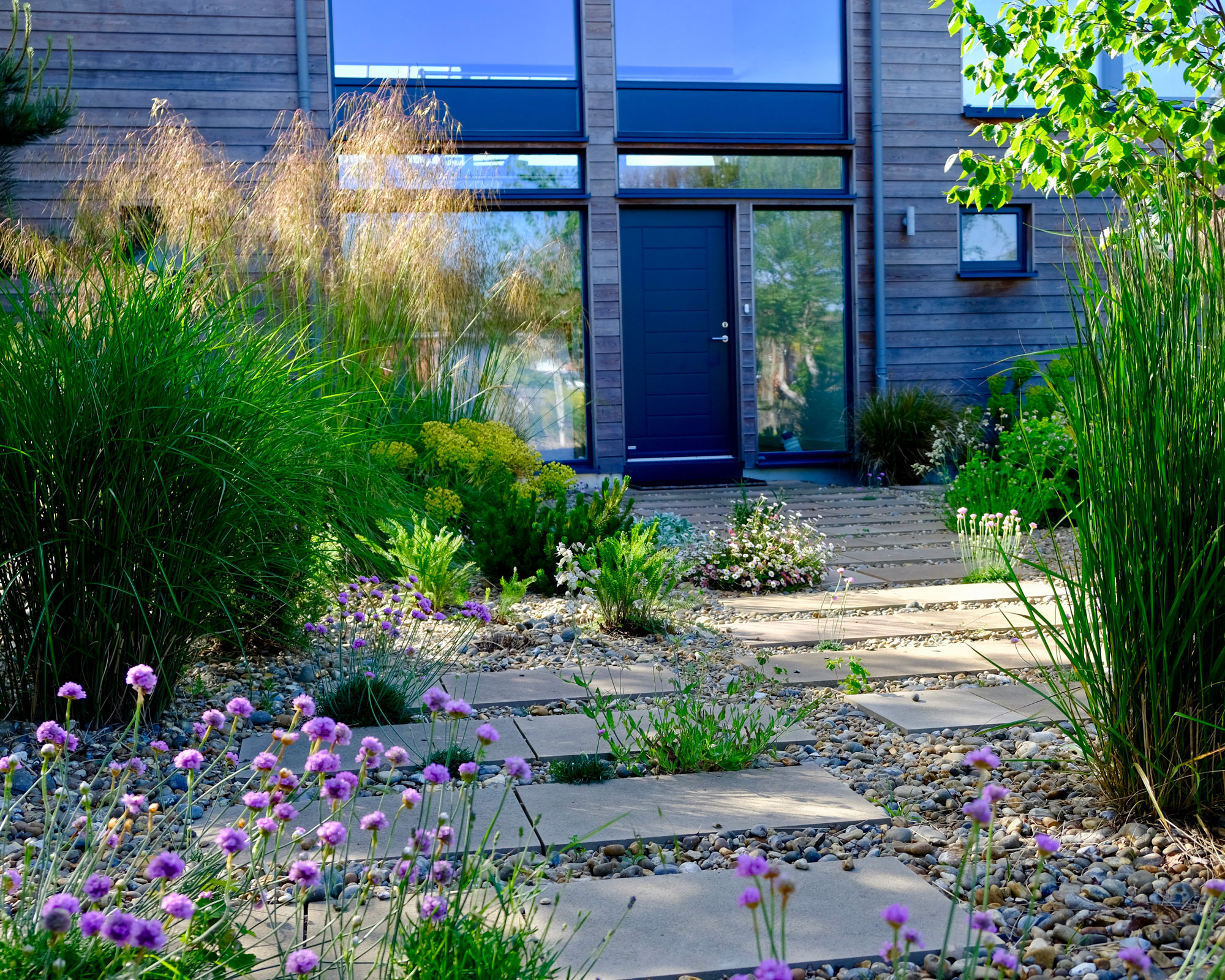
What do you put in a dry garden?
Like any garden, a dry garden should comprise a sensitive mix of hard landscaping and planting.
Natural stone and gravel are the preferable materials for landscaping – ideally these should be locally sourced in order to reduce carbon emissions and help the garden harmonize with the local landscape.
Planting should be low maintenance and adapted to drier climates. According to the experts at Cambridge Botanic Garden, 'greyleaved, waxy-leaved or aromatic plants are indications of good adaptation to drought conditions'.
Their recommended plants include euphorbia, sedum, nepeta, geranium, bergenia, hebe, potentilla, santolina, lavender and rosemary.

Lifestyle journalist Sarah Wilson writes about garden design and landscaping trends for Homes & Gardens. She has studied introductory garden and landscape design, and also has an RHS Level 2 qualification in the Principles of Plant Growth and Development. She is a regular contributor to Homes & Gardens and Livingetc. She has also written for Country Living, Country Homes & Interiors, and Modern Gardens magazines
- Melanie GriffithsSenior Editor of Gardening Know How